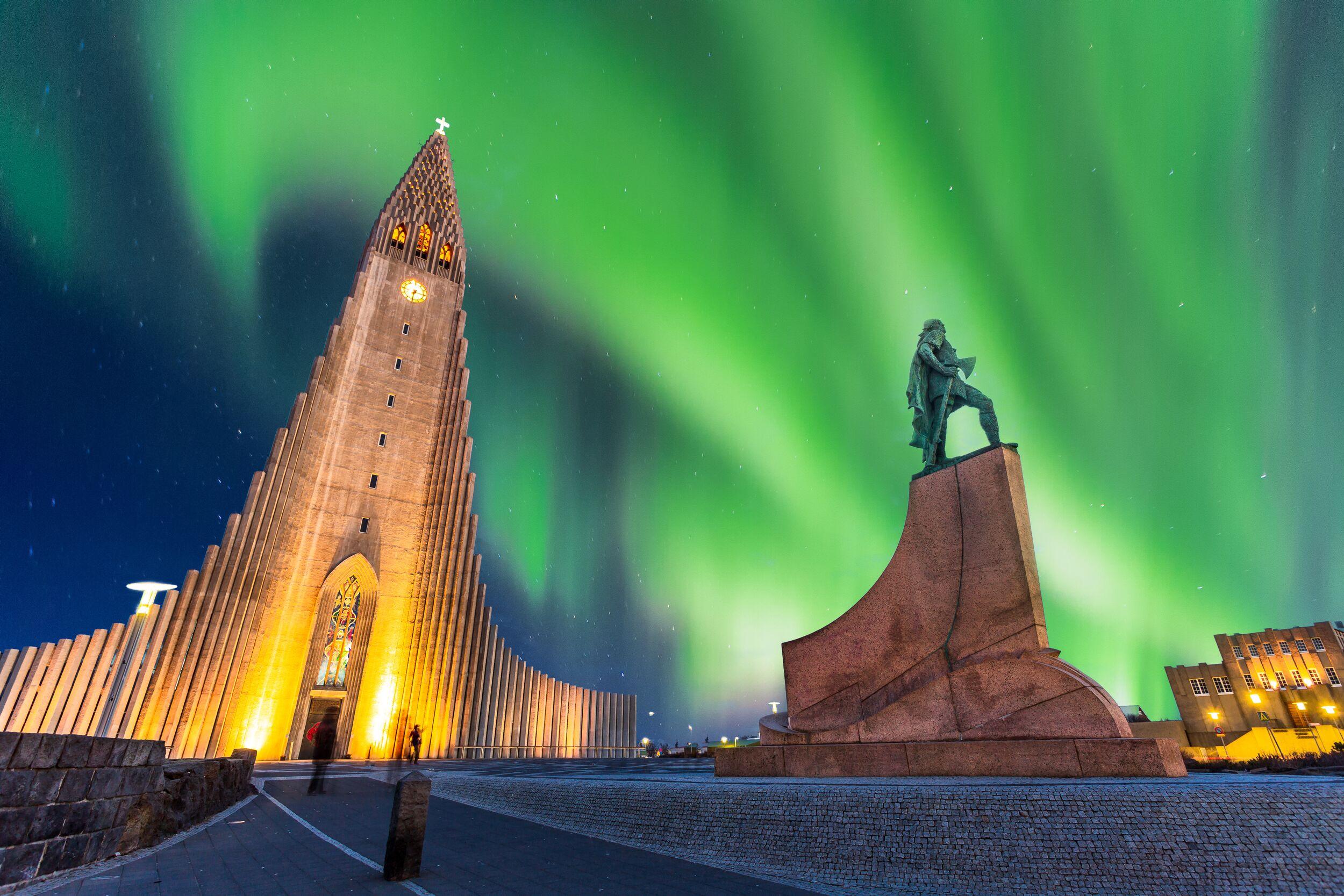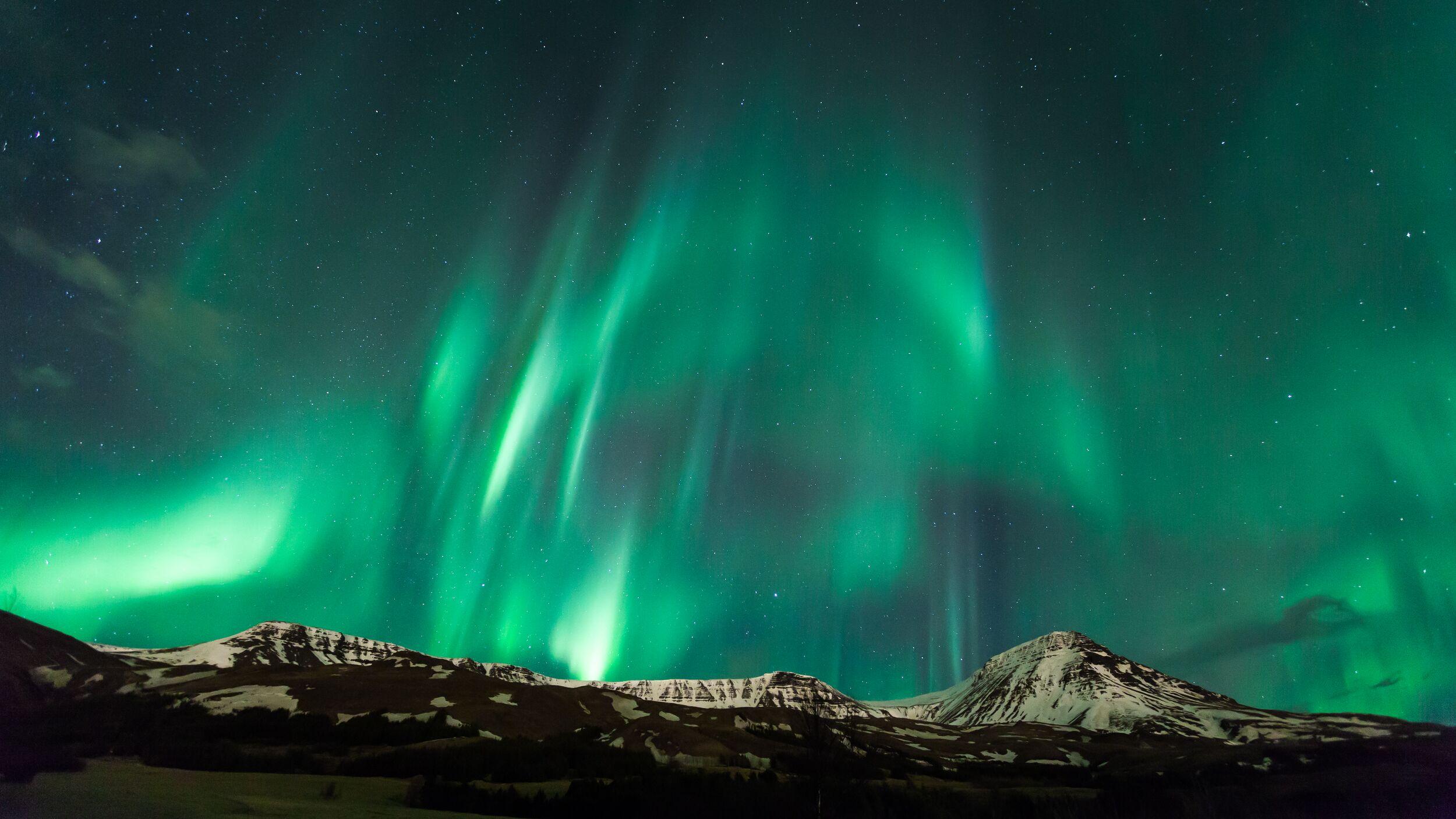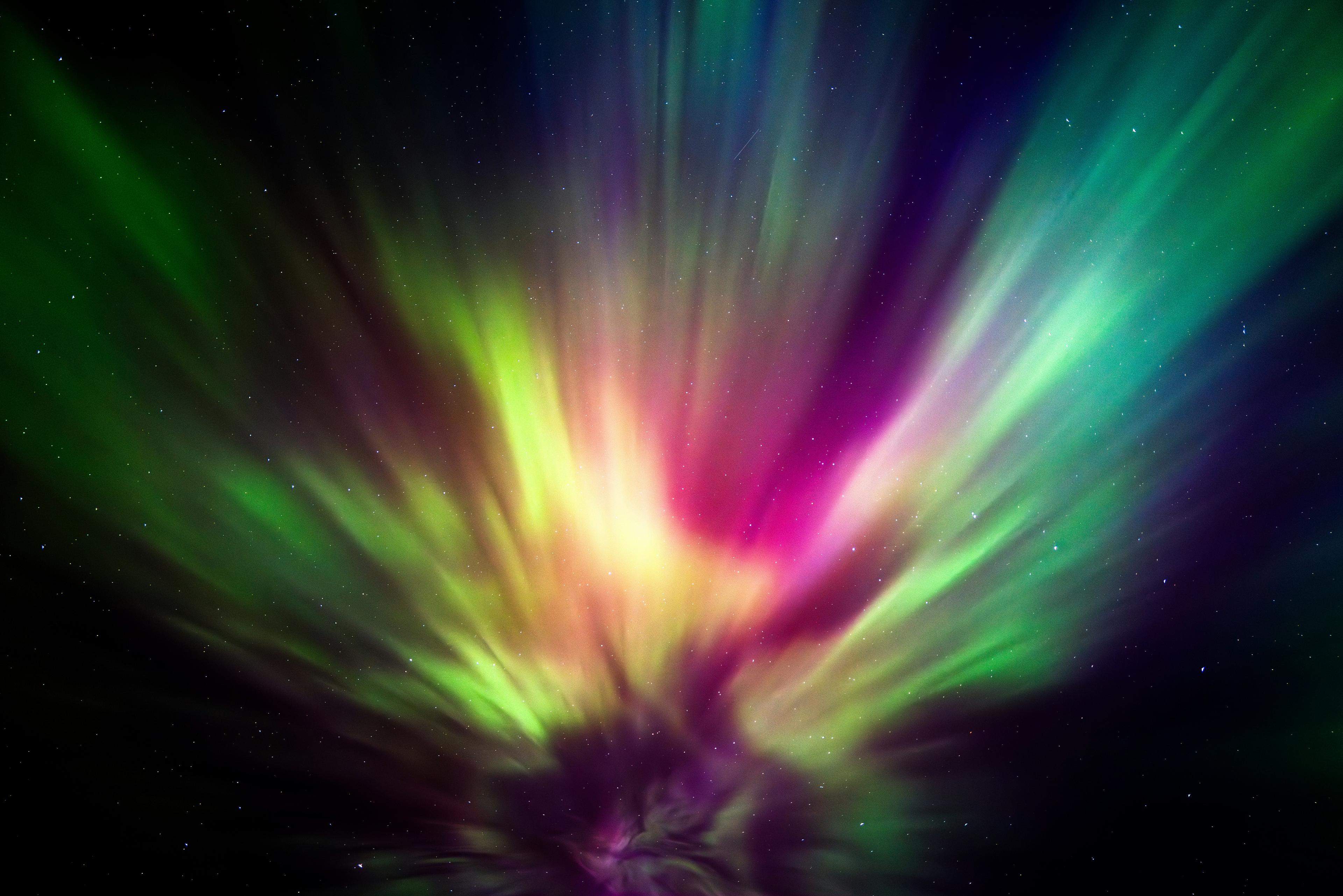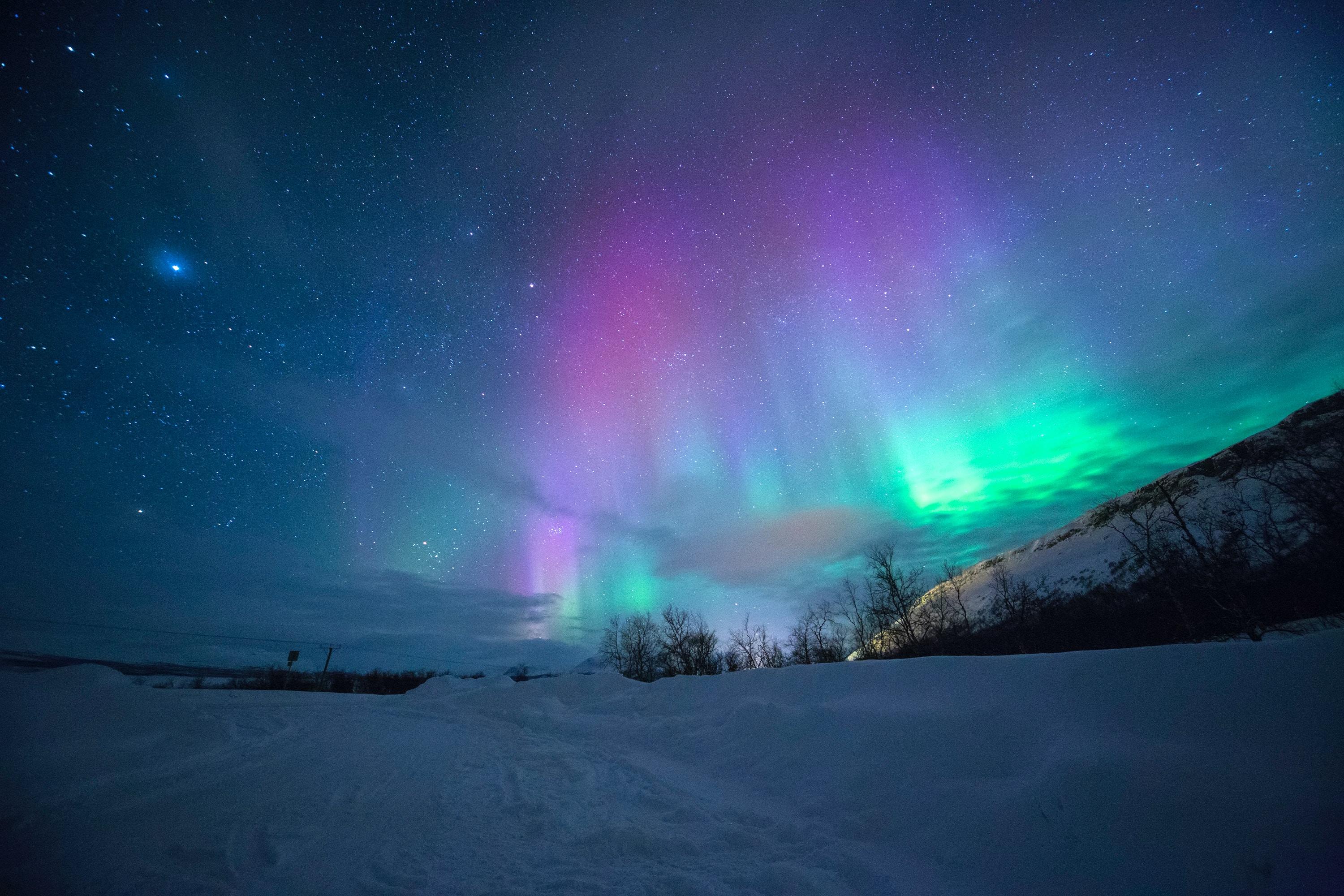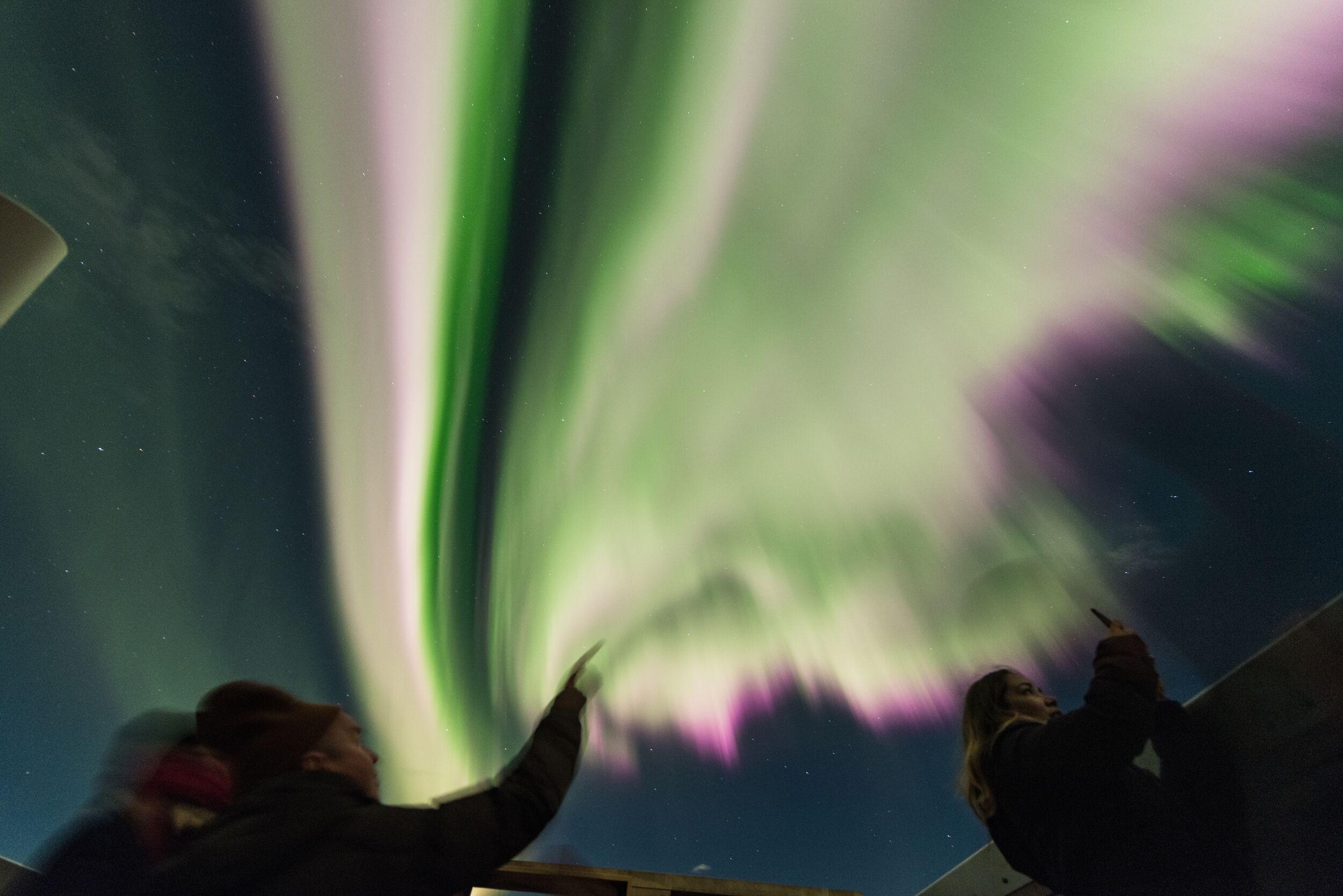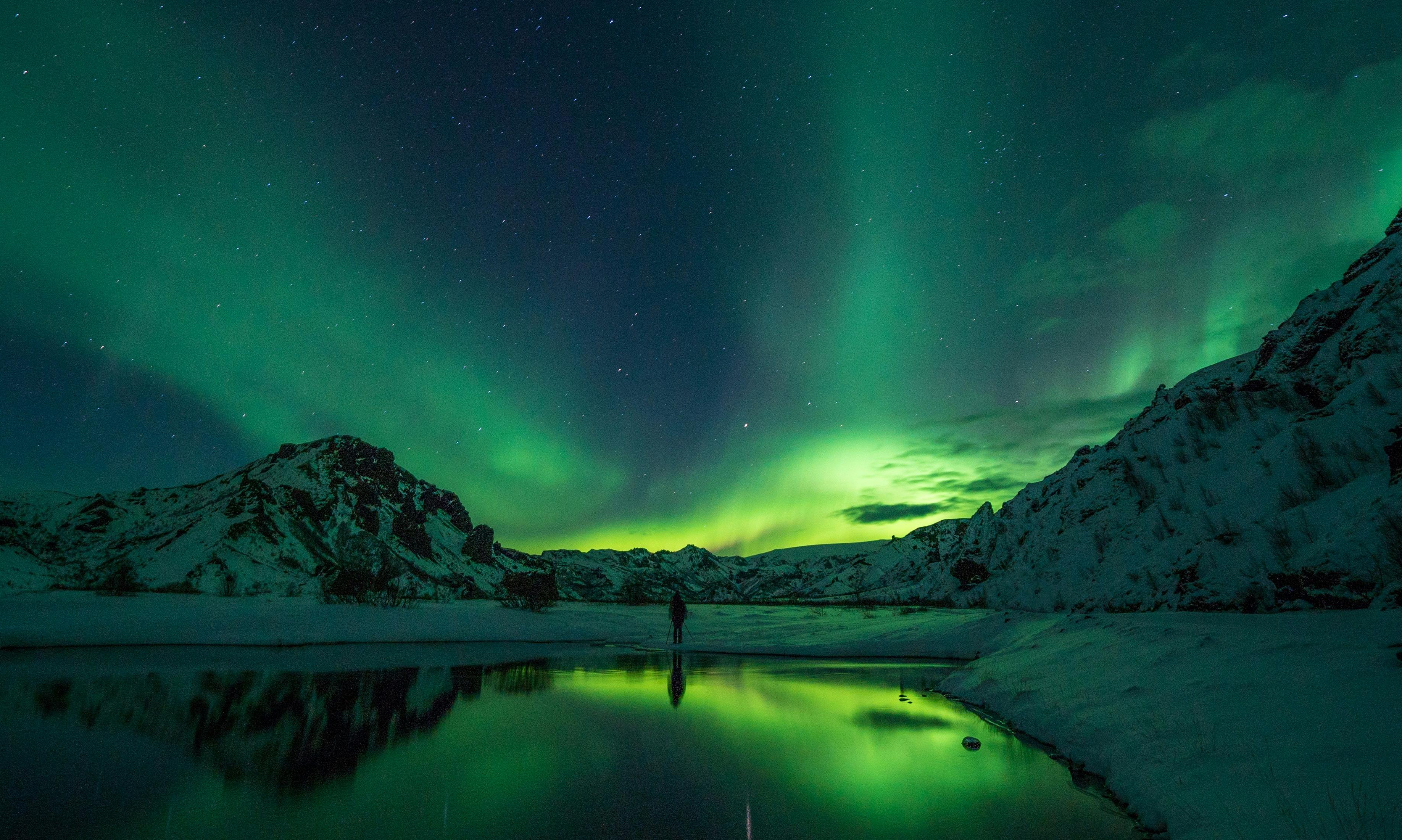Why Aurora Basecamp Is a Must-Visit for Northern Lights Lovers
Table of Contents
- 1What’s the Appeal of the Northern Lights?
- 2What Causes the Northern Lights?
- 3The Solar Maximum and How It Impacts Your Chances of Seeing the Northern Lights
- 4What Makes Iceland a Good Place to See the Aurora Borealis?
- 5Should You Book a Northern Lights Tour?
- 6Why You Should Come to Aurora Basecamp to Learn About the Northern Lights
- 7Advantages of Visiting Aurora Basecamp If You’re Keen to See the Northern Lights
- 8Questions and Answers about the Northern Lights
What’s the Appeal of the Northern Lights?
Between autumn and spring in Iceland, daylight ebbs away allowing the inky black to encroach. The dark sky reveals its secrets, from sparkling constellations to the biggest prize of all: the Northern Lights. Taking the form of arcs, ribbons and curtains, variously green, red, purple and even white, the aurora borealis is a breathtaking natural phenomenon that everyone should see at least once in their lifetime.
Capricious and captivating in equal measure, the aurora borealis has captured the imagination of people long before they could explain the heavenly spectacle that they were witnessing. These myths and legends now co-exist with scientific facts, layering an air of mystery and enchantment on top of more rational explanations. Our knowledge base is still evolving as continued study enhances our understanding of space and the night sky.

What Causes the Northern Lights?
The science behind the Northern Lights is fascinating and we are learning more and more about the processes which take place. The sun is a constantly churning ball of hot matter. Sun spots form, an indicator of solar storms to come. During such solar storms, energy is released and electrically-charged particles stream towards the Earth. Our planet is protected by a magnetic field which deflects many of these particles.
However, during events known as coronal mass ejections (CMEs) some of the particles ejected by the sun are able to travel at high speed along the magnetic field lines to our atmosphere. There, they tangle in this spiders’ web environment, reacting with gases such as oxygen and nitrogen. As this interaction takes place, we see the result in the form of light that takes many dazzling colours.

The Solar Maximum and How It Impacts Your Chances of Seeing the Northern Lights
Around the solar maximum, sunspot intensity and frequency increases. Astronomers record such activity as they observe the sun’s surface, mapping these darker patches which represent cooler areas. The increased solar wind emissions that correlate to the greater prevalence of sunspots leads to stronger and more vivid auroras.
Scientific study has been mapping sunspot presence and distribution for centuries. Over time, researchers have identified that solar activity broadly follows an 11-year cycle. We’re currently midway through Solar Cycle 25 during which sunspot activity has been far more active than the predictions issued by the USA’s National Oceanic and Atmospheric Administration (NOAA) in conjunction with NASA.
This season is especially exciting for aurora hunters as scientists believe we may have reached or be approaching this solar maximum. There are still no guarantees, but during this period of enhanced activity, the Northern Lights can be especially active or more intense than usual. Of course, that’s great news if you’re considering a visit to Iceland soon.
The solar maximum is expected to occur between 2024 and 2029, with peak activity likely extending throughout this period.
What Makes Iceland a Good Place to See the Aurora Borealis?
Largely located just south of the Arctic Circle, Iceland is ideally positioned for sightings of the Northern Lights. While it’s occasionally possible to see the aurora borealis at lower latitudes, the displays and colours are typically much weaker. To fully appreciate the awe and wonder of the Northern Lights, you need to travel north where you’ll be under the Aurora Oval.
Iceland’s population is largely concentrated in Reykjavik and its immediate surroundings. Relatively few people live on this Mid-Atlantic island. This makes it remarkably easy to find an accessible spot that’s located a short drive from where you’re staying yet is free from the light pollution that would potentially have a negative impact on your aurora-viewing experience. Aurora Basecamp is one of these ideal locations.
Iceland is one of the best places on Earth to experience the Northern Lights.
Should You Book a Northern Lights Tour?
While you can, in theory, view the Northern Lights anywhere that’s dark enough and cloud free if solar activity is sufficient, there can be disadvantages to going it alone. If the aurora is faint, you might not be sure if you’re seeing the Northern Lights or not – particularly with the naked eye. Also, clear skies can be accompanied by plummeting temperatures and perhaps icy driving conditions, which isn’t always something that’s easy for travellers to contend with.
Locating somewhere suitable can be tricky if you don’t know the area well. Rather than spending part of your valuable vacation time poring over weather maps and studying predicted auroral activity, handing over the reins to someone else can be beneficial. Locals know the kinds of places that are most suitable for viewing the Northern Lights. Guided tours and organised activities such as a visit to Aurora Basecamp can therefore take some of the guesswork out of the proceedings.
Why You Should Come to Aurora Basecamp to Learn About the Northern Lights
Many guided tours take the form of mobile adventures, where you’ll be driven around until clear skies present themselves over a dark location. However, visiting the Aurora Basecamp is a much more comfortable way. With plenty of seating and a fire burning to keep the cold at bay, it’s the ideal place to hang out and wait for the Northern Lights to show up.
You’ll find Aurora Basecamp nestled within a lava field on the Reykjanes peninsula. It comprises a small group of low-lit geodesic domes linked by wooden boardwalks. Tucked away from nearby settlements and far from the light pollution of Reykjavik, this north-facing locale feels far more remote than it actually is, yet your transfer will take barely thirty minutes from the city centre.
Typically, the evening begins with a fifteen-minute presentation about the science that underpins the aurora and how to improve your chance of seeing it. You don’t need any prior knowledge as the information will be presented in a clear and easy to understand way by experts who are skilled at communicating effectively.
This is followed by ample free time for you to spend inside or outside the geodesic dome when you (hopefully) will witness it with your own eyes. There’s a campfire outside as well as a heated dome to retreat to when you need to come in from the cold, making this a fun and sociable way of watching the Northern Lights.

Advantages of Visiting Aurora Basecamp If You’re Keen to See the Northern Lights
There are a number of advantages to making a visit to Aurora Basecamp, whether it’s your first attempt at viewing the Northern Lights or the hope of a follow-up sighting.
They’ll explain how the science works
Your ticket to Aurora Basecamp includes what they dub their Dark Park experience. One of the geodesic domes on site is dedicated to helping you understand why the Northern Lights occur. Using striking images to help you figure out what to look for and plasma tubes in which aurora-like light has been recreated, they’ll bring the Northern Lights to life in a way it’s not possible to do simply by listening to a guide’s explanation. Even if the aurora borealis doesn’t show up for real, this will help you interpret what you see when it eventually does.
They’ll teach you how to interpret aurora forecasts
As with anything scientific, it feels like there’s a lot of jargon to contend with as you wrap your head around the inexact science of aurora forecasting. Your guide will walk you through the different data that’s used to calculate the likelihood of the Northern Lights showing up. You’ll learn how to interpret the different types of forecast data such as Kp indices and find out why the position of the Aurora Oval is so crucial. This is valuable information to take away and use on subsequent Northern Lights hunts.
Aurora Basecamp staff will answer any questions
As a first-time aurora hunter, you are likely to have plenty of questions, from which direction to face in the hope of seeing the Northern Lights to the settings you should use on your camera or smartphone to achieve the best images. At Aurora Basecamp, staff members remain on hand for the duration of your visit to answer any questions you might have about the science of the aurora and its presence in Iceland. They’ll be able to confirm a sighting if the aurora starts faintly and are sure to share your excitement when it ramps up in intensity.
Comfortable surroundings make for a relaxed evening
One of the most tiresome aspects of a traditional aurora hunt is the wait – the Northern Lights don’t show up to a timetable so there’s a possibility you’re in for a long, cold night. At Aurora Basecamp, you enjoy the huge advantage of having somewhere warm and cosy to hang out in anticipation of what could follow. Inside the geodesic dome there’s a toasty wood burning stove to heat the space, while sheepskin-strewn benches make a comfortable perch while you sip mugs of hot chocolate.
A flexible approach that puts you in the driving seat
Compared to hanging around outside on a cold, dark night, a visit to Aurora Basecamp is a more enjoyable way to wait for the Northern Lights to put on a display. Most travellers would agree that having somewhere to sit with friends or family members as you all anticipate the celestial display to come is more congenial. The flexible approach you’ll experience here means you set the agenda and decide how much time you spend outside – and when it’s time to come in.
It’s suitable for all the family
Traditional Northern Lights hunts can be challenging for families, particularly those with small children. The set-up at Aurora Basecamp is designed so that you can pop in and out whenever you like, so if the little ones are feeling cold, it’s no problem.
The transparent face of the geodesic dome means you can choose to watch nature’s display from inside, should you wish, while the level wooden boardwalks outside means it’s safe and easy if you prefer to step outside. You’ll still need warm clothes, but you won’t need to stay bundled up all evening unless you want to.
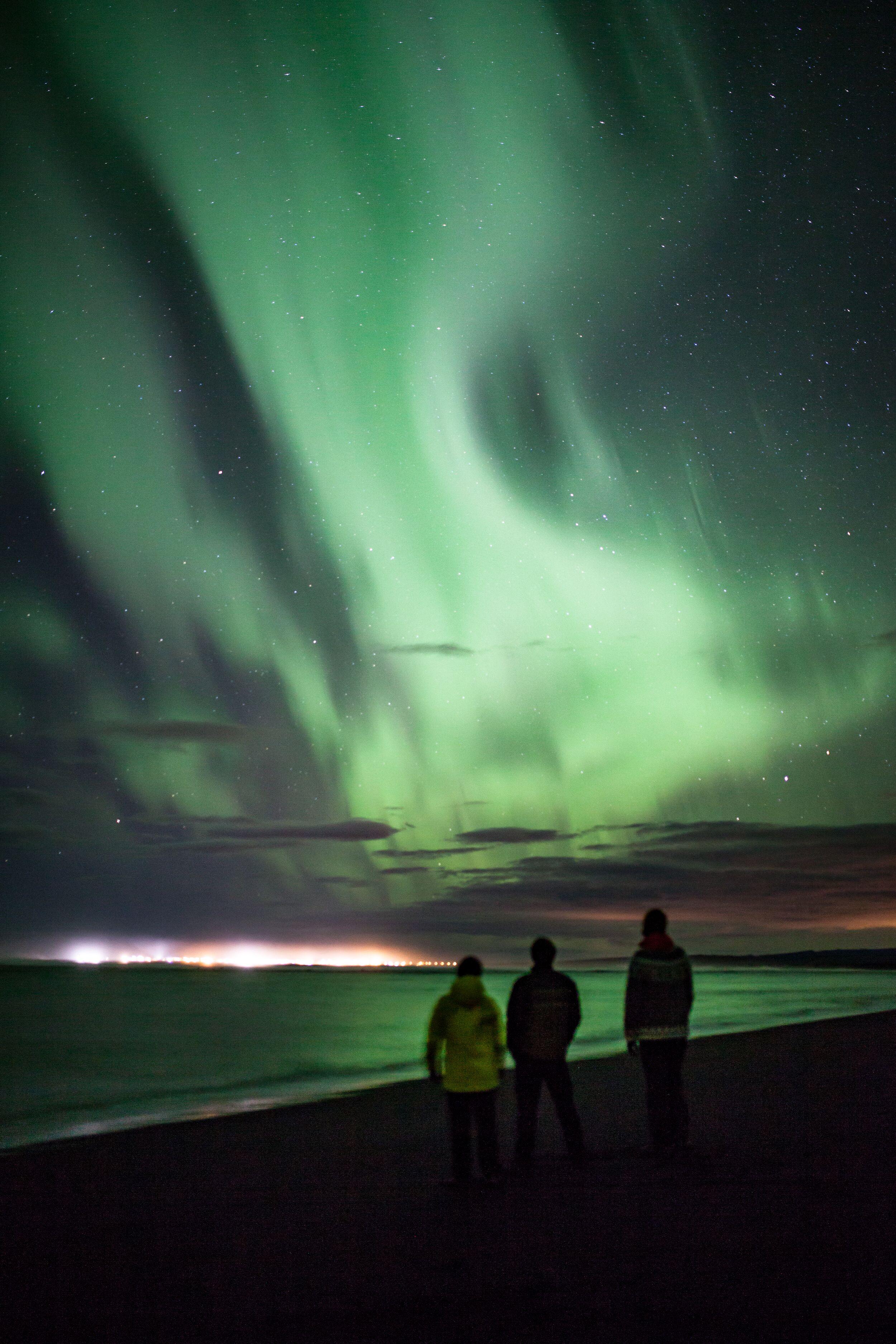
Aurora Basecamp is an excellent choice, even for those who have witnessed the Northern Lights before
It offers a blend of fun and education, and the chance to enjoy crisp fresh air, stunning nature, and a comforting cup of hot chocolate—all while you wait for the elusive lights to appear.
We’d advise booking your Aurora Basecamp visit as close as possible to the beginning of your stay. In the event of a disappointing first attempt – unfortunately it does sometimes happen – this will give you ample opportunity to rebook should you need to. In addition, the skills that you learn while at Aurora Basecamp will come in useful if you intend to try to spot the Northern Lights again later in your trip.
Remember: no two aurora sightings are the same, so we predict you’ll be hooked, just like us!
Select Your Northern Lights Tour
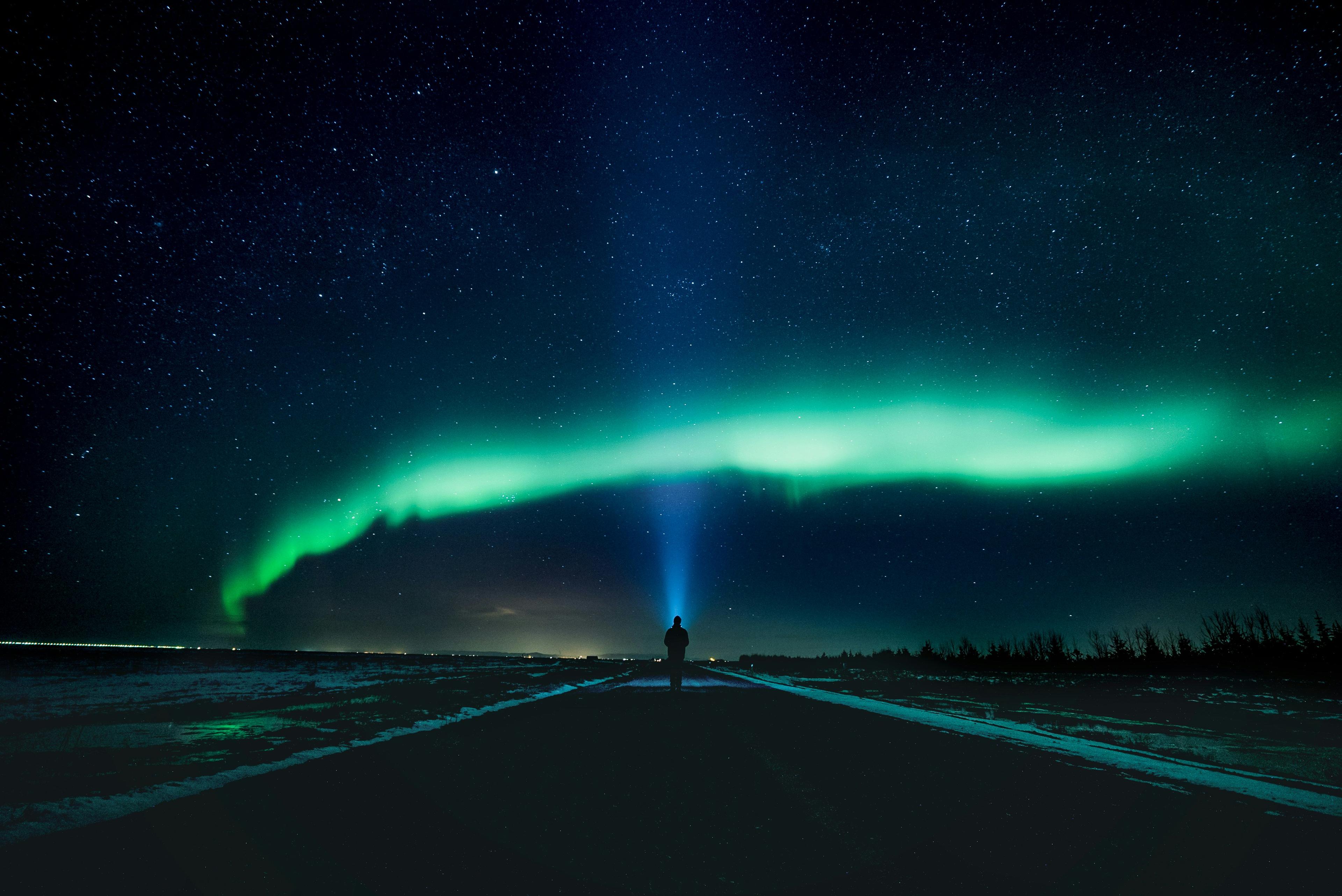
Northern Lights Explorer – Super Jeep Tour
Embark on an unforgettable Northern Lights adventure from Reykjavík in a specially modified Super jeep designed to explore off-the-beaten-path locations. Escape the crowds and experience the breathtaking Aurora in the remote Icelandic wilderness.
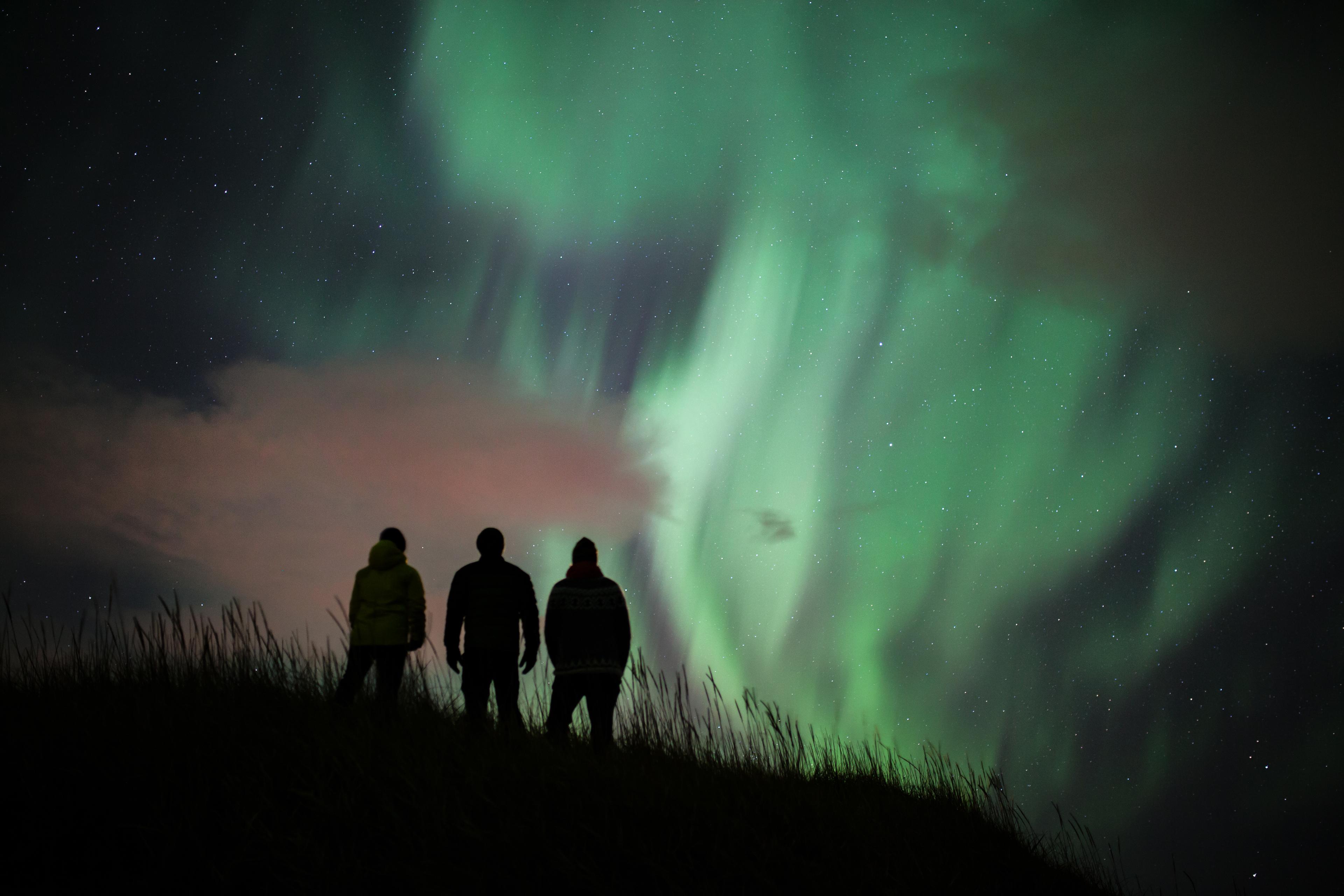
Northern Lights - Small Group Tour
Catch the stunning Northern Lights in the sky, and if they're shy, rebook for free until they show. Included admission to the Aurora Centre's Northern Lights Exhibition on the tour date. The small group size ensures an intimate experience and personalized attention from your expert guide.
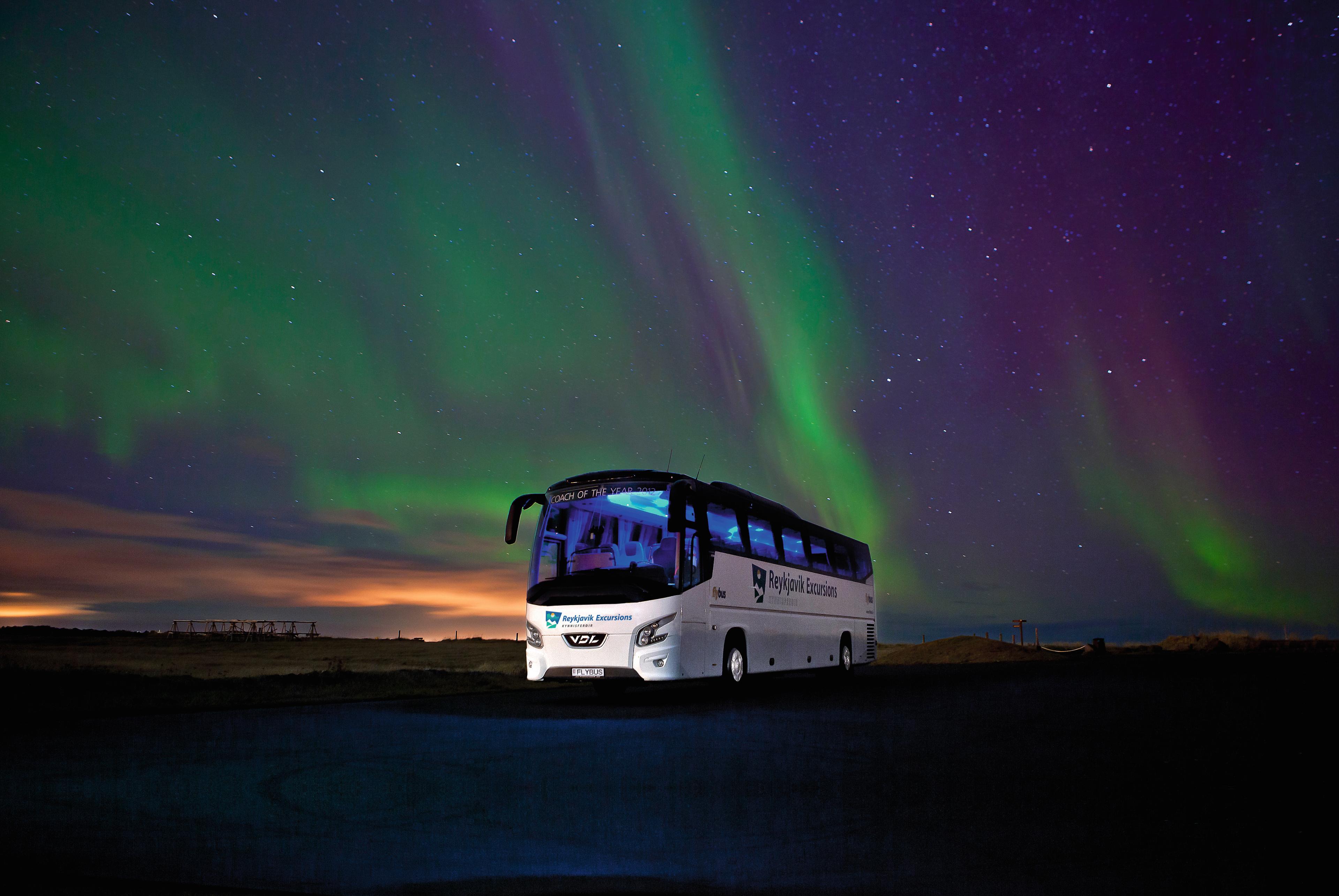
Northern Lights Tour
See the majestic Northern Lights dancing across the sky. If the skies are shy, try again free of charge as many times as you need until you see them! Learn about the phenomenon by visiting the Aurora Centre - Northern Lights Exhibition in Reykjavík; admission is included in this tour!
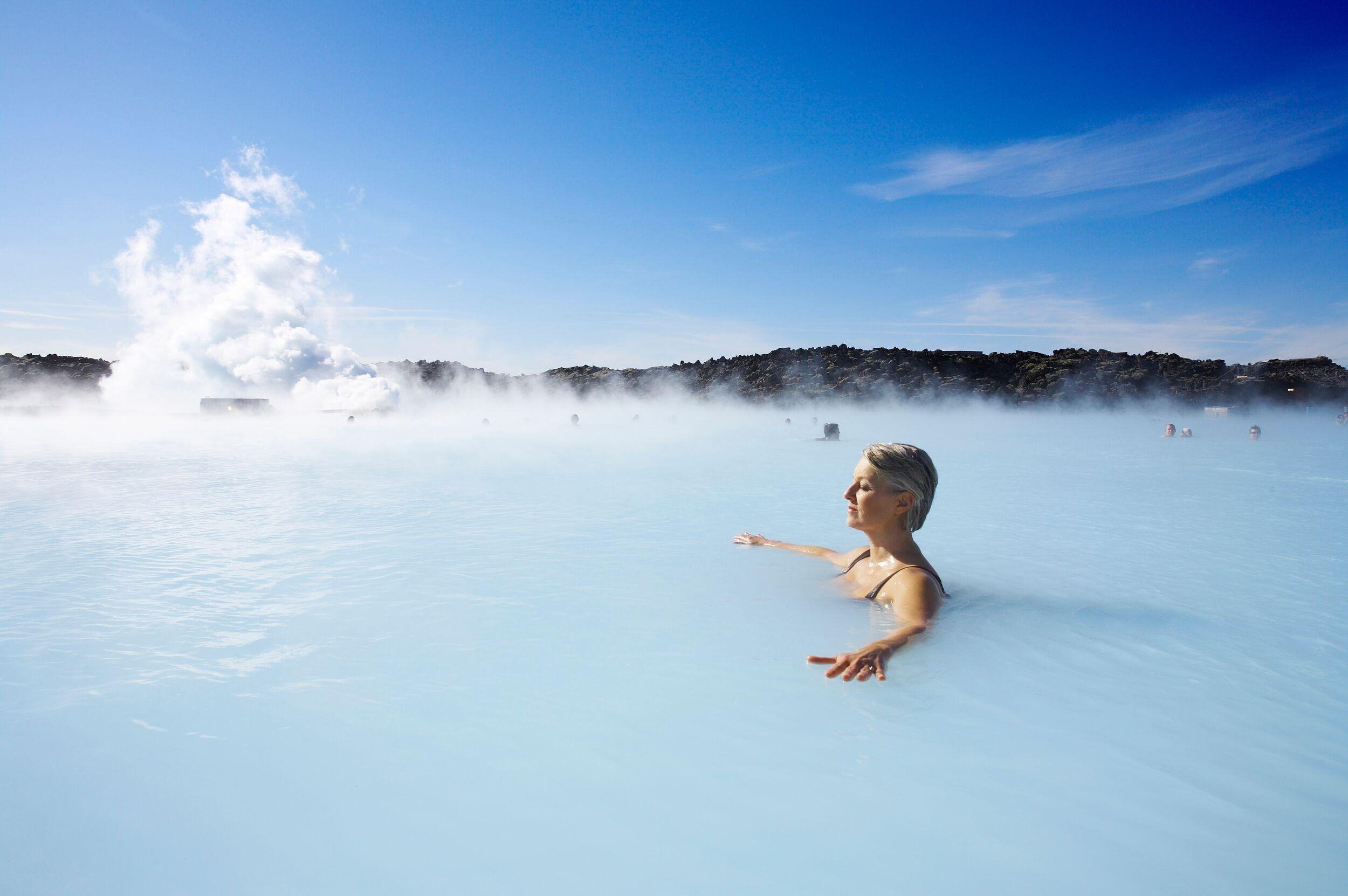
- Best seller
- Popular
Blue Lagoon & Northern Lights
Enjoy a perfect winter day in Iceland! Experience the best of Iceland with this package of two of the island’s most popular tours in one day! Soak in the milky blue healing water of the Blue Lagoon, which is one of Iceland's most famous tourist attractions and is considered by many to be a once-in-a-lifetime experience and an unmissable part of a visit to Iceland. After your return to Reykjavík, a guide will lead you on a search for the elusive northern lights! Watching the lights dance and flicker in the sky, changing shape and colour, is incredible. Prepare to be dazzled!
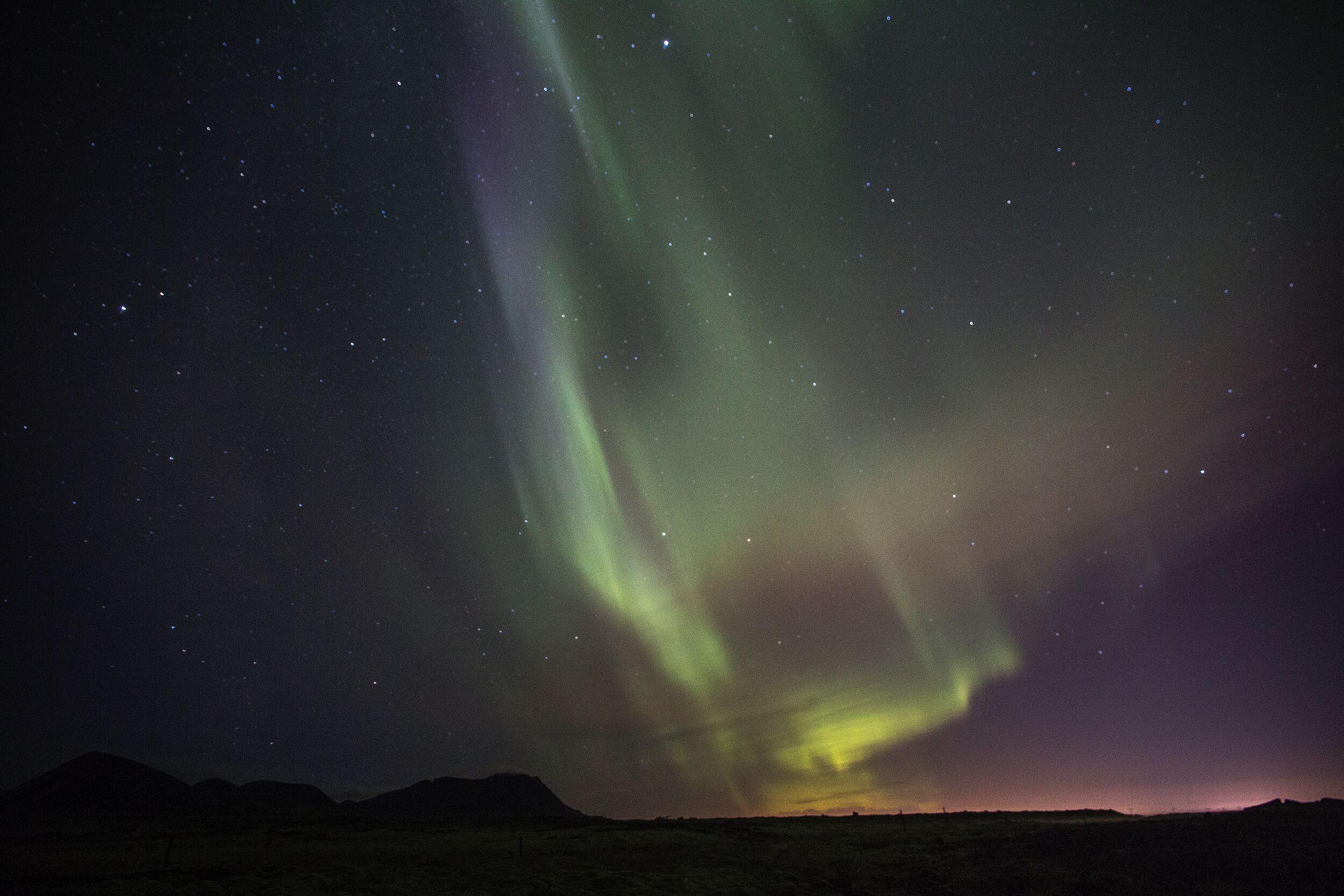
The Golden Circle & Northern Lights - Combo Deal
Want to see the sites of the Golden Circle and hunt for the northern lights but have a limited amount of time? Consider this express Golden Circle/Northern Lights tour! Experience the landmarks of the classic Golden Circle in South Iceland on this unforgettable day tour. The Golden Circle encompasses the must-see sights of Thingvellir National Park, the golden Gullfoss waterfall, and the bubbling geothermal region of Geysir. After your return to Reykjavík, a guide will lead you on a search for the elusive northern lights!

Northern Lights & Fontana Geothermal Baths
Revitalise both body and soul by bathing in the geothermal baths at Laugarvatn Fontana followed by a northern lights hunt.
Questions and Answers about the Northern Lights
Aurora Basecamp is a purpose-built facility for Northern Lights enthusiasts, nestled in a quiet lava field on the Reykjanes peninsula in Iceland. Located just 30 minutes from Reykjavík, it features low-lit geodesic domes linked by wooden boardwalks, providing an ideal, cozy setting to watch the aurora away from light pollution.
Aurora Basecamp offers comfortable and heated geodesic domes with a wood-burning stove, sheepskin-covered benches, and hot drinks for a warm and relaxed experience. There's an outdoor campfire, level boardwalks for easy access, and expert staff on-site to guide you, answer questions, and confirm sightings. This setup ensures a pleasant and flexible waiting experience for visitors of all ages.
Aurora Basecamp combines science and comfort to enhance the aurora-viewing experience. Visitors can learn about the science of the aurora in a dedicated dome with plasma tubes and interactive displays. Staff teach how to interpret aurora forecasts and remain available to answer questions. The flexible setup allows visitors to watch the lights from inside or outside, making it ideal for families and those who prefer a cozy, sociable environment.
Yes, Northern Lights watching can be a magical and memorable experience for the whole family! Choosing a family-friendly location like Aurora Basecamp ensures a comfortable, safe, and engaging outing for children of all ages. Its cozy facilities and thoughtful setup make it suitable for both small children and older kids.
Aurora Basecamp is designed with families in mind. Key features include:
- Heated Domes: Warm geodesic domes with wood-burning stoves provide a cozy retreat, so children can easily warm up between outdoor viewing sessions.
- Level Boardwalks: Safe and easy-to-navigate paths make it accessible for little ones.
- Indoor Viewing Option: The transparent dome walls allow families to watch the aurora from the comfort of the indoors if it’s too cold outside.
- Sociable Atmosphere: Families can relax together, share hot drinks, and enjoy the wait as part of a stress-free outing.
- Engaging Education: Kids will love learning about the Northern Lights through interactive displays and plasma tubes that recreate aurora-like effects.
Traditional tours often require long drives and extended periods outdoors in the cold, which can be challenging for families. At Aurora Basecamp:
- Flexibility is Key: Parents can decide when to head outside or stay warm indoors. No one has to endure the cold for longer than they’re comfortable.
- Short Transfer Time: Located just 30 minutes from Reykjavík, it minimizes travel time, reducing fatigue for young children.
- Comfortable Facilities: Unlike standing in an open field, Aurora Basecamp provides warm seating, a campfire, and a relaxed environment for kids to feel comfortable and entertained.
Aurora Basecamp is suitable for all ages, from toddlers to teenagers. Small children will appreciate the warm spaces and visual wonders of the plasma tube displays, while older kids and teens can dive deeper into learning about aurora science and practice spotting the lights themselves.
Families should dress warmly, bring a camera or smartphone to capture memories, and arrive with curiosity! Encourage kids to ask the expert staff questions about the Northern Lights and share the fun of learning how to interpret aurora forecasts. Booking early in your trip allows flexibility to reschedule if the lights don’t appear on the first attempt.
Aurora Basecamp transforms Northern Lights watching into a family-friendly adventure, blending warmth, comfort, and education for an unforgettable Icelandic experience.
Almost any camera phone these days is powerful enough to take decent pictures of the Northern Lights. In fact, many phone cameras are actually better than proper cameras!
To take a good photo, turn your exposure to the maximum, turn off the flash, and use night mode. Apps such as Nightcap, Cortex Camera, or the Northern Lights Photo Taker can help too.
The rarest colours of the Northern Lights are blue and red. Blue auroras are produced by nitrogen molecules at lower altitudes and are less common. Red auroras, occurring at the highest altitudes and caused by high-altitude oxygen, are also relatively rare. Both these colours require specific atmospheric conditions to be visible, making them a less frequent but spectacular sight in auroral displays.
The Northern Lights can be seen from Reykjavík, yes. And it’s a magical experience to see them by chance when you’re just enjoying your evening.
However, the city is not the best place to see the Northern Lights. That’s because light pollution can prevent them from appearing with their full strength. Instead, you want somewhere dark to enjoy them at their best.
The Northern Lights are special for a couple of key reasons:
1. Unique Natural Phenomenon: They represent a spectacular natural light display in the Earth's sky, primarily seen in high-latitude regions around the Arctic and Antarctic. This phenomenon results from the interaction between the Earth's magnetic field and charged particles from the sun, making it a unique celestial event.
2. Cultural and Mythological Significance: Throughout history, the Northern Lights have held significant cultural and mythological importance in various societies. They have inspired numerous folklore tales and art and have been a subject of awe and wonder. Their ethereal beauty and the magical experience they provide add to their special status in human perception and experience.
It’s possible to see the Northern Lights in Iceland throughout the winter.
For the Northern Lights to be visible, you need two things: solar activity and a clear, dark sky. The darker the better—that’s why winters in very northern countries like Iceland are the best time to see them.
The ideal time to see the Northern Lights are the darkest months of the year: November, December, and January. However, you can see them from September through to April.
The scientific processes that cause the Northern Lights occur very often, if not pretty much all the time—throughout the night, day, winter and summer. However, often you can’t see them because of the cloud, the midnight sun, or because you’re not looking.
While every night might be an exaggeration, the Northern Lights are much more common than you might think!
Auroras can last from a few minutes to several hours, depending on the intensity of the geomagnetic storm causing them.
To maximize your chances of seeing the Northern Lights, it's advisable to stay for at least a week. This duration allows for variability in weather conditions and solar activity, which are crucial factors in the visibility of the auroras. Since the Northern Lights are a natural phenomenon and their appearance can be unpredictable, a longer stay increases the likelihood of witnessing this spectacular display, especially considering potential cloudy nights or periods of low solar activity.
Facing north often increases your chances of seeing the Northern Lights, especially in lower-latitude areas. In Iceland, however, the lights are most often right above our heads or stretching across the entire sky.
There’s no way of guaranteeing that you’ll see the Northern Lights. It’s a natural phenomenon that’s affected by the weather, after all. But with Northern Lights tours, you do have a pretty good chance.
In Iceland, December is the month when the days are shortest and nights are darkest. That means it’s typically the favourite month for Northern Lights-hunters.
That said, you can have as much luck seeing the aurora borealis in any of the months of the winter. All you need is dark, clear skies.
Exciting studies and anecdotal evidence, ranging from Sami folklore to modern stargazers, suggest that the Northern Lights might produce sounds, a phenomenon as elusive as the lights themselves.
Historically, indigenous peoples and early Arctic explorers reported hearing sounds like crackling and whooshing during auroral displays, though these claims were met with scepticism since auroras occur at altitudes beyond the human ear's acoustic range.
Recent research in Finland, however, has recorded sounds such as claps and crackles coinciding with the auroras at lower altitudes within the human audible range. This emerging theory suggests that the electrical phenomena of auroras, involving charged particles and temperature variations, could generate these sounds akin to the noise produced by a spark.
While not all observers experience these sounds, and they're often heard under specific, quiet conditions, for some, the Northern Lights are not just a visual spectacle but a celestial concert, highlighting the dynamic nature of our planet.
Yes, you can see the Northern Lights in Reykjavik in some cases. However, when the lights are faint or low on the horizon, their visibility can be significantly reduced by the city lights and obstructed by buildings. For the best viewing experience, it's recommended to find spots away from the urban light pollution and with an unobstructed view of the sky.
It’s not at all rare to see the Northern Lights in Iceland! That’s why so many people come to the Land of Ice and Fire to enjoy the display.
In fact, you can see the aurora borealis almost every night if the skies are clear. You just need to know where to look!
The best way to increase your chances of seeing the Northern Lights is to join a tour. While you can sometimes see the phenomenon by yourself, when you’re led by an expert guide, they’ll be able to show you exactly where to look.
What’s more, if you don’t see the Northern Lights on your tour, we’ll give you a ticket to another tour on a day that suits you for free—to double your chances.
Three interesting facts about the Northern Lights are:
1. The Northern Lights, also known as Aurora Borealis, are caused by the interaction of solar wind - a stream of charged particles escaping the Sun - with Earth's magnetic field and atmosphere.
2. They can exhibit a variety of colours, with green being the most common. These colours result from different gases in the atmosphere getting excited by the solar particles; oxygen emits green and red hues, while nitrogen gives off blue and purple.
3. Although best known for appearing in polar regions, during periods of strong solar activity, the Northern Lights can be seen at lower latitudes, far from the polar areas. This makes them a spectacular and somewhat unpredictable natural light show.
To see the Northern Lights at their best, it’s recommended that you find a place where light pollution is lowest. That’s why the best Northern Lights tours will leave cities such as Reykjavík—because you can see the aurora better where it’s darkest.
That said, you can see the Northern Lights from the city. And as weather conditions and cloud cover change every night, the best place to see the Northern Lights changes too.
Seeing the Northern Lights in Iceland is fairly likely during the winter months if weather conditions are favourable.
The price of Northern Lights tours in Iceland depend on what you want to get up to and how you want to travel.
The most affordable option is the classic tour from Reykjavík, which takes you by coach to a destination where the conditions are best that evening. But if you want to travel by small group, or on a private vehicle, you will pay more.
The same goes for tours that take you to different destinations, such as the Golden Circle or the Blue Lagoon.
Check out individual tour pages for up to date prices.
The Northern Lights do not occur every night; their visibility depends on solar activity and atmospheric conditions.
The Northern Lights are not exclusively in the north; they are mirrored by the Southern Lights (Aurora Australis) in the southern hemisphere, both occurring near the Earth's magnetic poles.
When on a Northern Lights tour, plan to wear clothes that will best keep you warm. You’re going to be outside at night in the Icelandic winter, and to enjoy the experience to the fullest you won’t want to get cold.
The best idea is to wear lots of thin layers, plus a winter jacket and a windproof outer shell. And don’t forget to keep your feet warm! Icelandic woollen socks, for example, can be a good idea.
The best parts of Iceland for Northern Lights are outside urban areas, with the eastern northern and western regions often recommended for clearer skies.
Related Articles
See all articlesRecommended tours
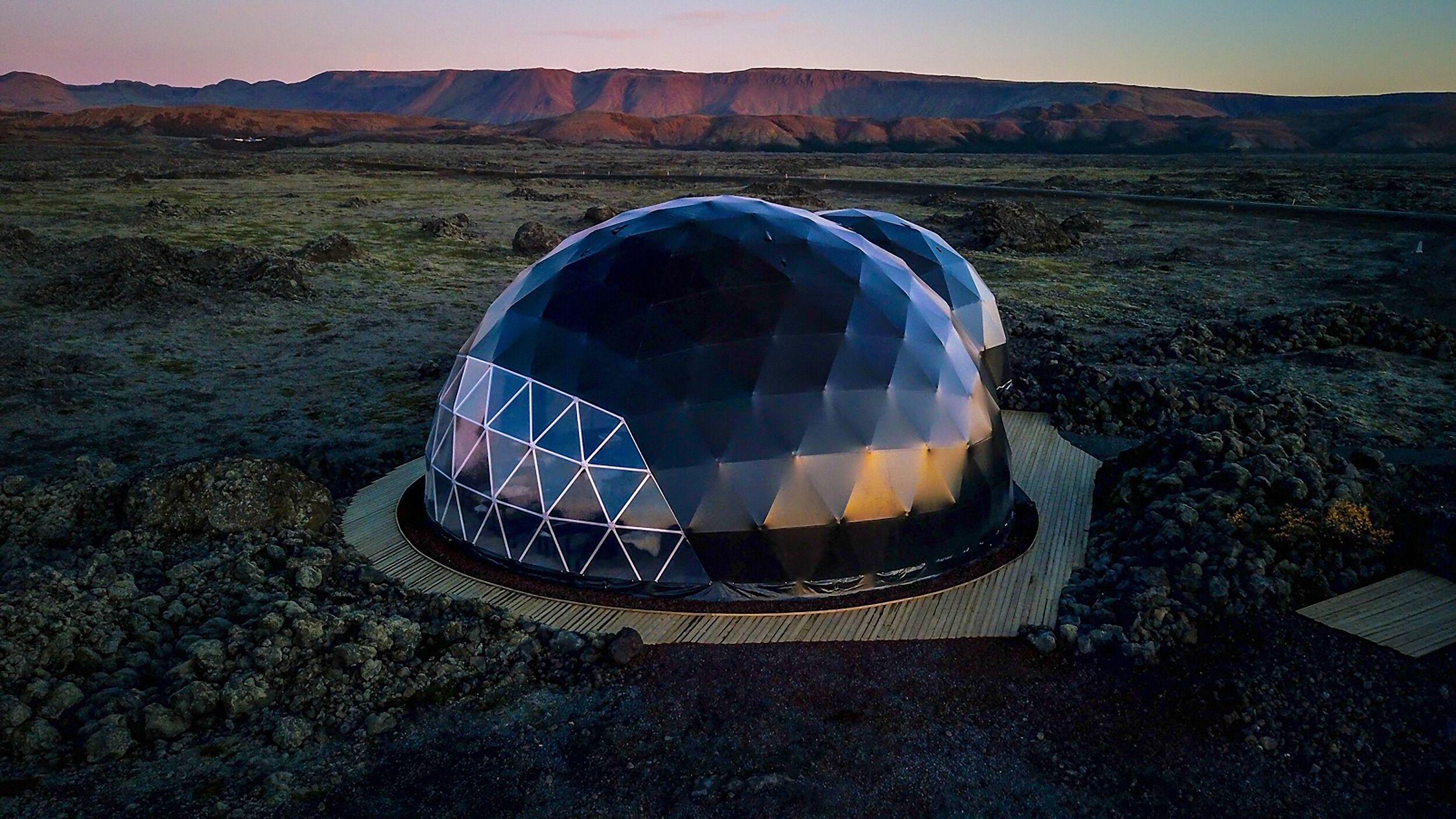
Northern Lights - Inside the Aurora Basecamp
Aurora Basecamp with pickup and drop off is a tour from Reykjavik to Aurora Basecamp - Northern Lights Observatory.

Northern Lights - Small Group Tour
Catch the stunning Northern Lights in the sky, and if they're shy, rebook for free until they show. Included admission to the Aurora Centre's Northern Lights Exhibition on the tour date. The small group size ensures an intimate experience and personalized attention from your expert guide.

Northern Lights Tour
See the majestic Northern Lights dancing across the sky. If the skies are shy, try again free of charge as many times as you need until you see them! Learn about the phenomenon by visiting the Aurora Centre - Northern Lights Exhibition in Reykjavík; admission is included in this tour!

- Best seller
- Popular
Blue Lagoon & Northern Lights
Enjoy a perfect winter day in Iceland! Experience the best of Iceland with this package of two of the island’s most popular tours in one day! Soak in the milky blue healing water of the Blue Lagoon, which is one of Iceland's most famous tourist attractions and is considered by many to be a once-in-a-lifetime experience and an unmissable part of a visit to Iceland. After your return to Reykjavík, a guide will lead you on a search for the elusive northern lights! Watching the lights dance and flicker in the sky, changing shape and colour, is incredible. Prepare to be dazzled!

Northern Lights Explorer – Super Jeep Tour
Embark on an unforgettable Northern Lights adventure from Reykjavík in a specially modified Super jeep designed to explore off-the-beaten-path locations. Escape the crowds and experience the breathtaking Aurora in the remote Icelandic wilderness.

The Golden Circle & Northern Lights - Combo Deal
Want to see the sites of the Golden Circle and hunt for the northern lights but have a limited amount of time? Consider this express Golden Circle/Northern Lights tour! Experience the landmarks of the classic Golden Circle in South Iceland on this unforgettable day tour. The Golden Circle encompasses the must-see sights of Thingvellir National Park, the golden Gullfoss waterfall, and the bubbling geothermal region of Geysir. After your return to Reykjavík, a guide will lead you on a search for the elusive northern lights!


